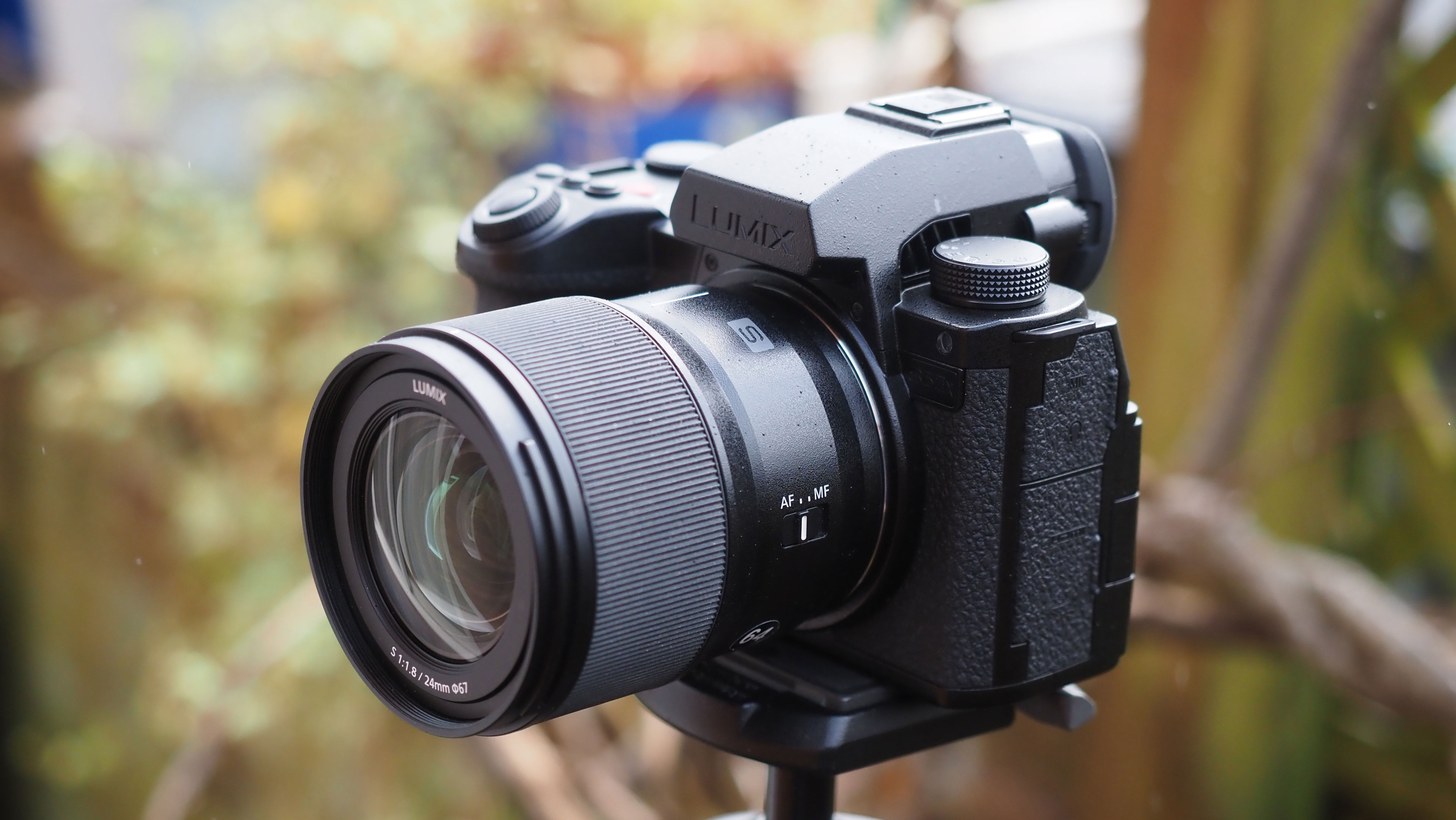
While all the attention goes on Panasonic’s Lumix S cameras, it’s been quietly building a very effective line-up of lenses too. In particular, Panasonic has kept both the size and the price of its ‘consumer’ lenses down, so that they balance well on the cameras and you can build up a good set of lenses at a reasonable cost.
The Lumix S 24mm F1.8 is the widest in a family of four reasonably priced primes, which also includes the Lumix S 35mm F1.8, 50mm f/1.8 and 85mm f/1.8 primes. What’s remarkable is that these are all practically the same size – they even share the same 67mm filters. Are these amongst the best L-mount lenses? That's debatable, but they are certainly worth taking seriously.
They’re not the only reasonably-sized Lumix optics. The Lumix S 20-60mm F3.5-5.6 kit lens is little larger, as is the Lumix S 14-28mm F4-5.6, which is very compact and light for a full frame ultra-wide zoom.
Panasonic’s Lumix S lenses might not be flashy, then, but they are practical. In fact, you could probably swap out any of Panasonic’s F1.8 primes, this 24mm F1.8 included, without even having to rebalance your gimbal.
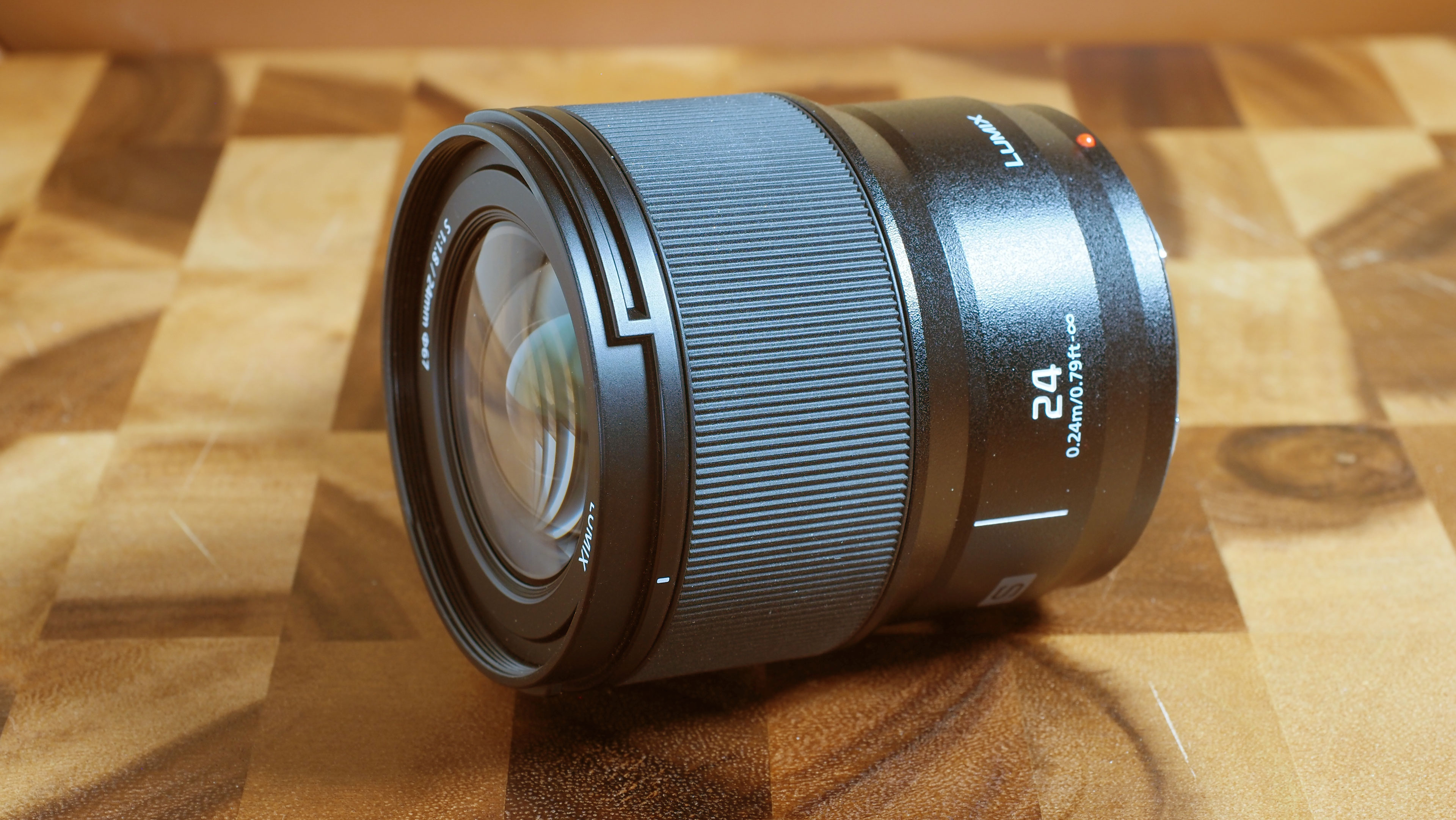
Panasonic Lumix S 24mm F1.8 specifications
Panasonic Lumix S 24mm F1.8 price and availability
The Panasonic Lumix S 24mm F1.8 is available now and costs around $798 / £799 / AU$1499. It’s significantly more expensive than the Lumix S 35mm F1.8, but that’s to be expected with a wider focal length. It doesn’t compare too well with the Sigma alternatives, though. The Sigma 24mm f/1.4 DG DN Art costs about the same, and while it is bigger and heavier, it’s both faster and has an aperture ring. Sigma also makes cheaper and smaller f/2 and f/3.5 variants, both with aperture rings too.
Panasonic Lumix S 24mm F1.8 design and handling
The one good thing you can say about the design of the Lumix S 24mm F1.8 is that there’s nothing to learn. There’s an AF/MF switch, a focus ring and that’s it. There’s no aperture ring on this lens or indeed most other Lumix S lenses. If you want direct aperture control, you’ll have to look at the alternatives from Sigma, and that doesn’t represent any great brand betrayal since both companies are part of the L-mount alliance.
The lack of a focus distance scale is probably no big issue because if you switch to manual focus you get an enlarged center section in the viewfinder for precise focusing (we were testing with a Lumix S5 IIx), a distance scale at the bottom of the screen and a green depth of field ‘zone’ which adapts to the aperture selected.
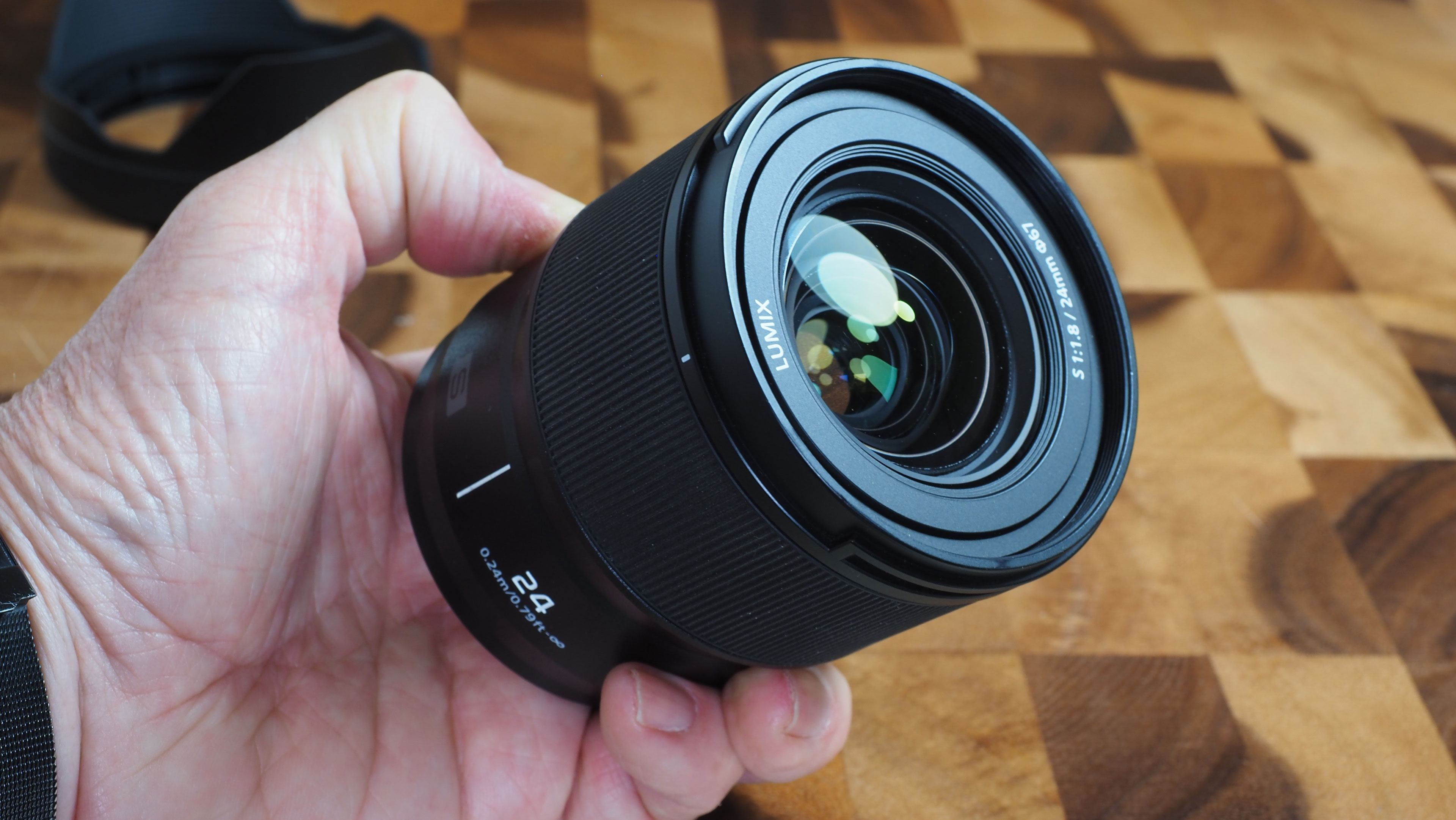

Although it’s an electronic fly-by-wire system, the manual focus ring is smooth and progressive and with just enough stiffness to prevent accidental focus shifts.
The lack of an aperture ring is more serious because if you’re using a Lumix body with no status display on the top plate, you might find the digital aperture display in the EVF or on the rear screen is on the small side. Panasonic does say, however, that the aperture mechanism has been designed for smooth exposure changes while filming video.
The focal length is clearly marked on the barrel, which is a nice touch given that these f/1.8 primes are hard to tell apart otherwise, and you do get a petal-shaped lens hood included.

Panasonic Lumix S 24mm F1.8 performance
The autofocus is so fast at normal shooting distances that it’s practically instantaneous. It’s also silent, so you might want to have the autofocus ‘beep’ enabled just so that you know the camera is ready to shoot. The AF does slow down a fraction with close-up subjects, though this is normal with any lens.
The focus breathing – or lack of it – is pretty remarkable too. We thought the Lumix S 35mm F1.8 was pretty good at suppressing focus breathing, but this seems better still. Photographers get upset by the wrong sort of bokeh, while for videographers it’s focus breathing.
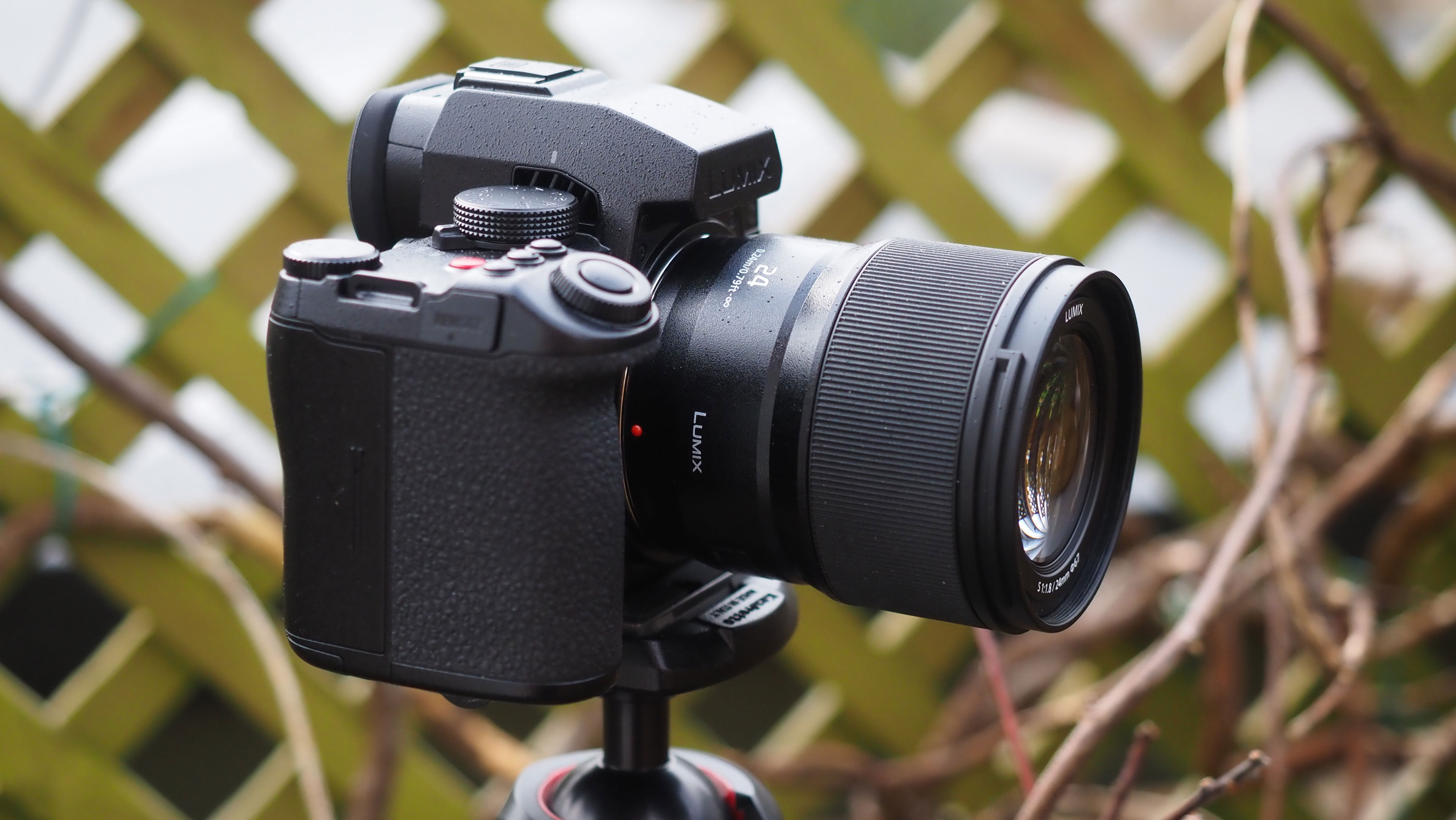
The AF responsiveness is one of the most impressive aspects of this lens’s performance, Optically, it’s not quite as good. If you stop down to f/4 or smaller apertures, the middle and edge performance catches up pretty well with the center definition, but at wider apertures, the edges are a little weaker. It’s not a bad performance by any means, especially at this price, but it’s not in any way remarkable either.
In real-world shooting, the image quality is fine. You won’t often want to shoot wide open, and if you do your focus (sorry) is likely to be on the subject rather than the edges of the picture, so any drop in edge definition wide open is scarcely a problem anyway. If you want edge-to-edge optical excellence, you don’t have too much choice in the Lumix S range and might need to swap to Sigma’s excellent L-mount alternatives.
Panasonic Lumix S 24mm F1.8 sample images







Panasonic Lumix S 24mm F1.8 lab results
We run a range of lab tests under controlled conditions, using the Imatest Master testing suite. Photos of test charts are taken across the range of apertures and zooms (where available), then analyzed for sharpness, distortion and chromatic aberrations.
We use Imatest SFR (spatial frequency response) charts and analysis software to plot lens resolution at the center of the image frame, corners and mid-point distances, across the range of aperture settings and, with zoom lenses, at four different focal lengths. The tests also measure distortion and color fringing (chromatic aberration).
Sharpness:

You'll need to stop down to f/2.8 to get the best out of the lens, at which point center sharpness is excellent. It's a pity sharpness soon drops of as you move away from the center of frame, and it's particularly lacklustre at large apertures.
Fringing:
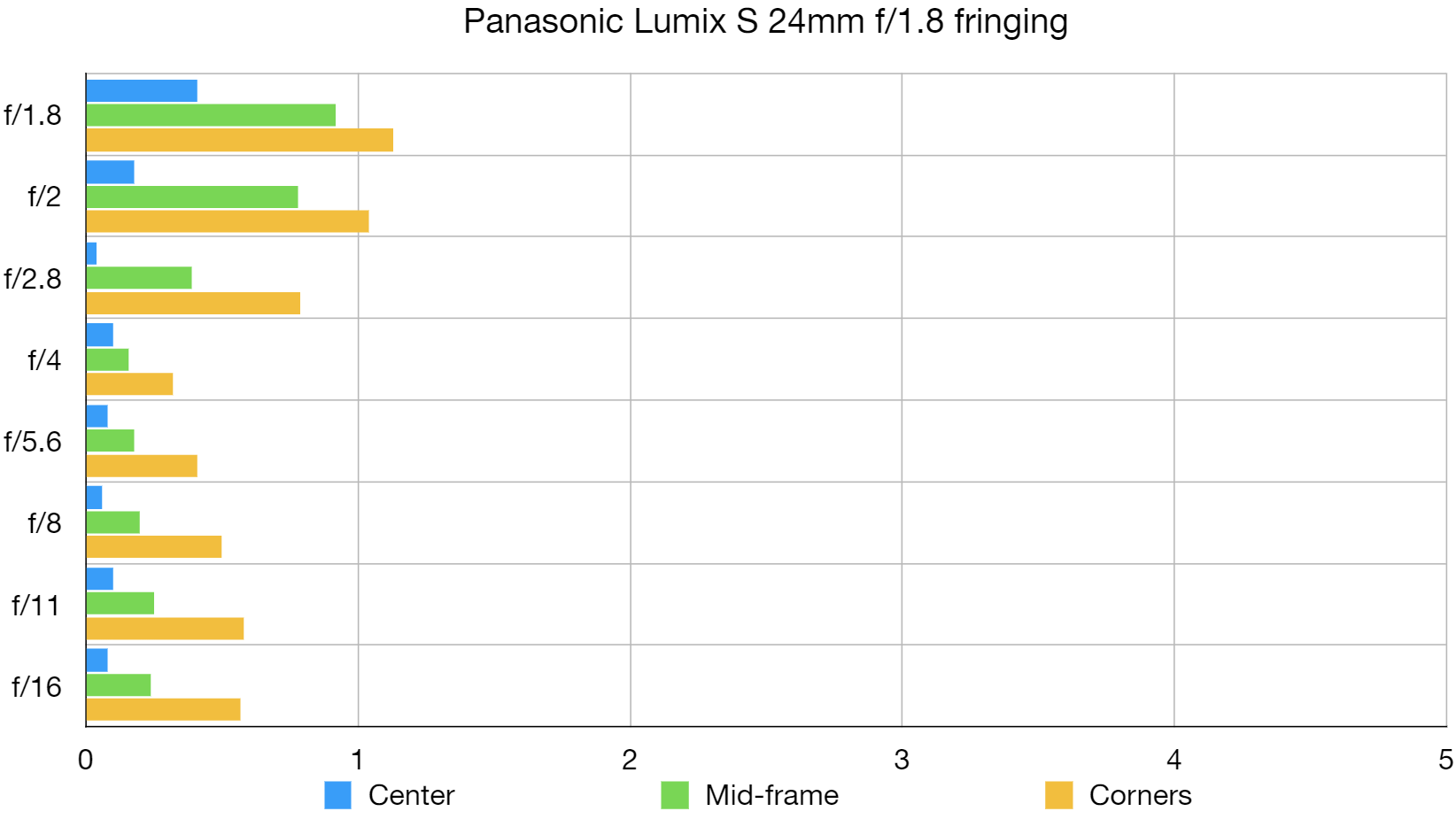
Minor color fringing can be seen under close scrutiny in the corners of frame, but only at larger apertures.
Distortion: -5.1
Barrel distortion is quite bad if left uncorrected, but in-camera firmware correction easily straightens things out.
Panasonic Lumix S 24mm F1.8 verdict
The Panasonic Lumix S 24mm F1.8 is physically identical to the 35mm F1.8 lens, with the same austere but effective design, and the same easy swapability for gimbal users. But its optical performance is good rather than stellar, and while it’s not an expensive lens, it’s not that cheap either. It’s an excellent choice for video, not just because of its size and weight, but also because of its highly responsive, silent AF and lack of focus breathing. For stills photography, though, Sigma’s f/1.4 Art, and f/2 and f/2.8 Contemporary lenses look a lot more convincing, especially since all three have aperture rings.
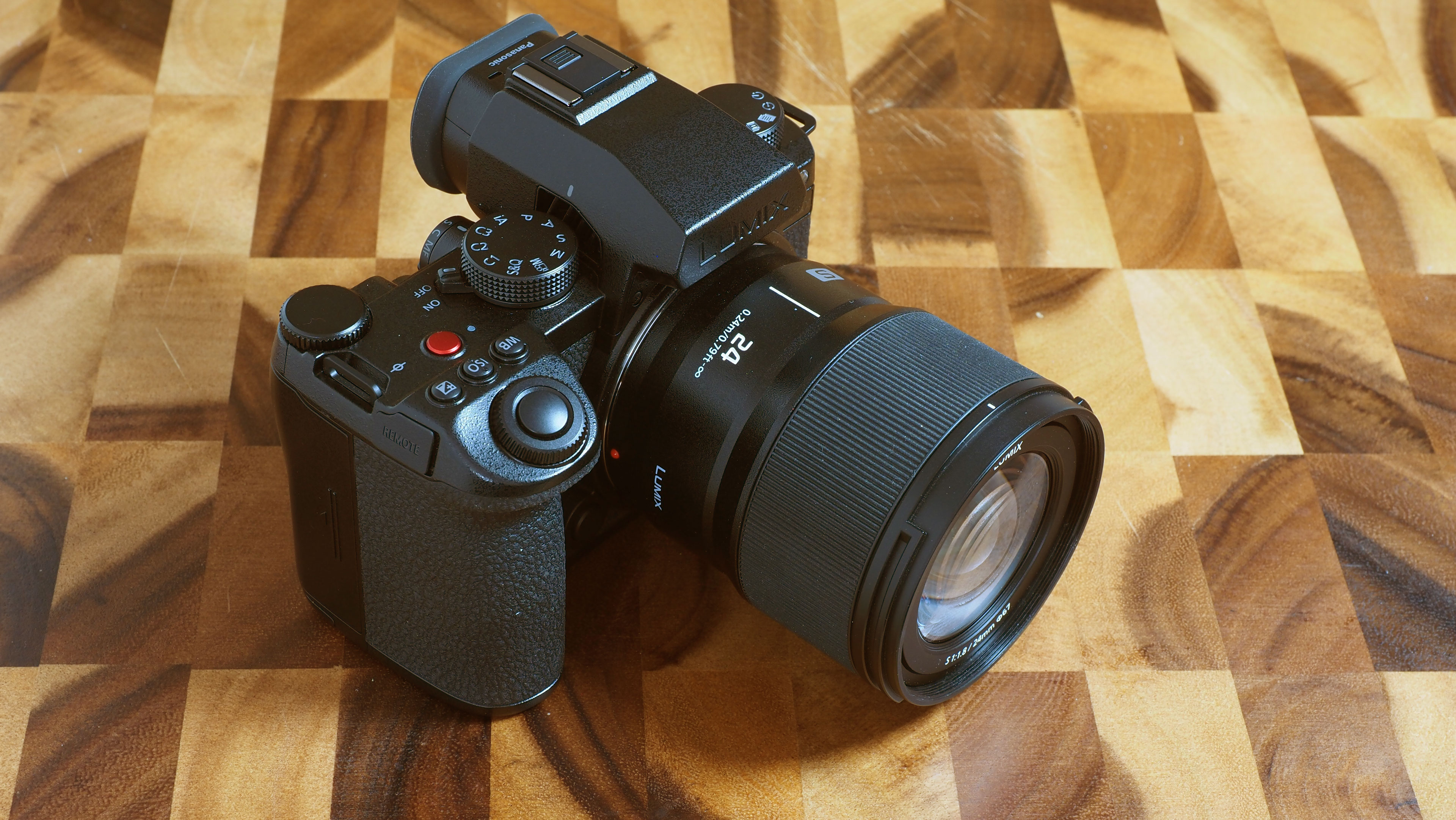
Should you buy the Panasonic Lumix S 24mm F1.8?
✅ Buy this...
- If you shoot video and demand fast, silent AF, smooth aperture control and no focus breathing
- If you’re a content creator aiming to build a set of fast and silent lightweight primes
🚫 Don't buy this...
- If you’re looking for the best optical performance for stills photography
- If like a physical aperture ring and you want a faster f/1.4 lens OR a super-compact 24mm f/3.5, as the Sigma alternatives are better







